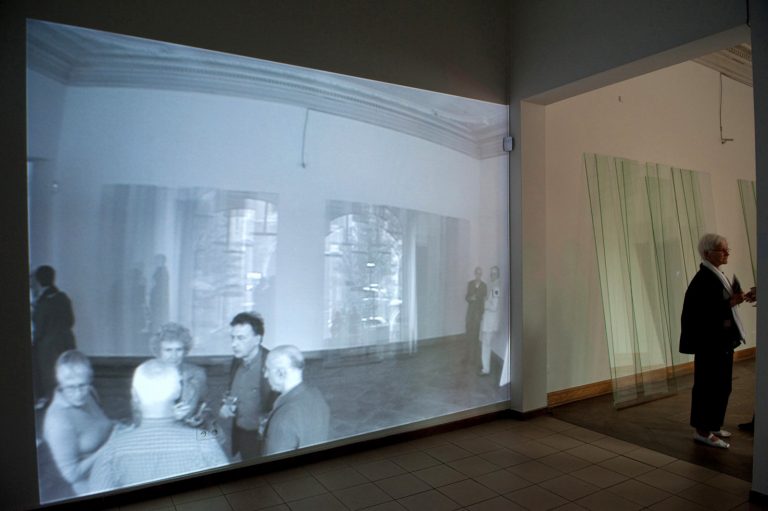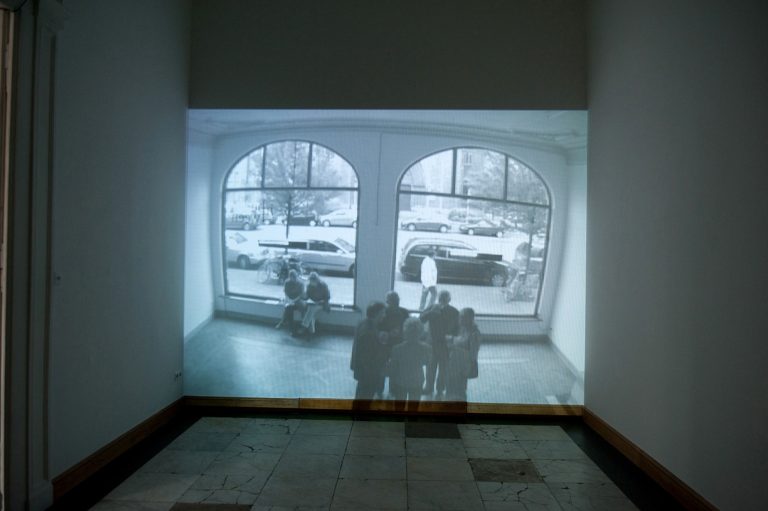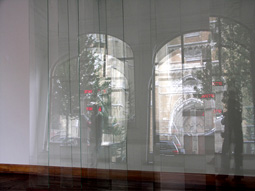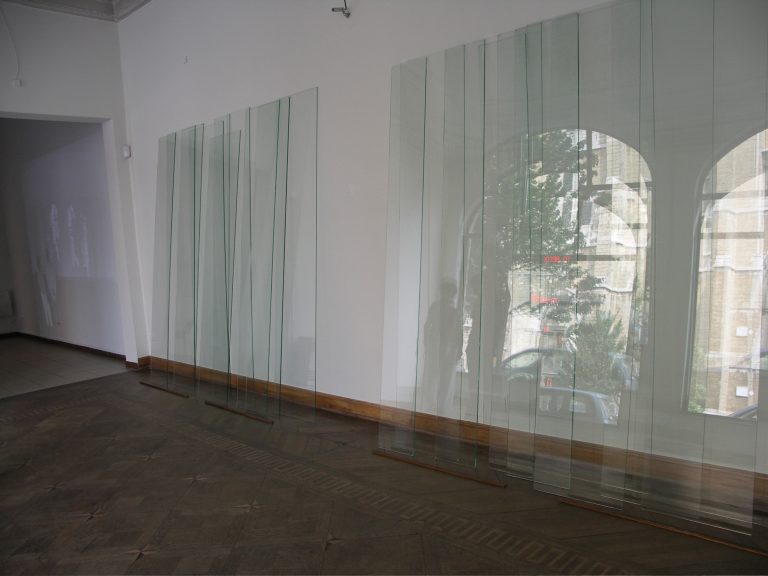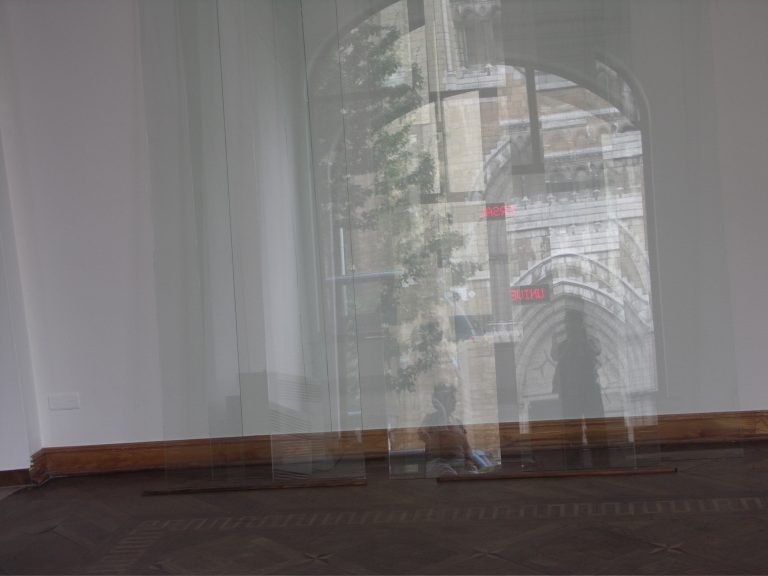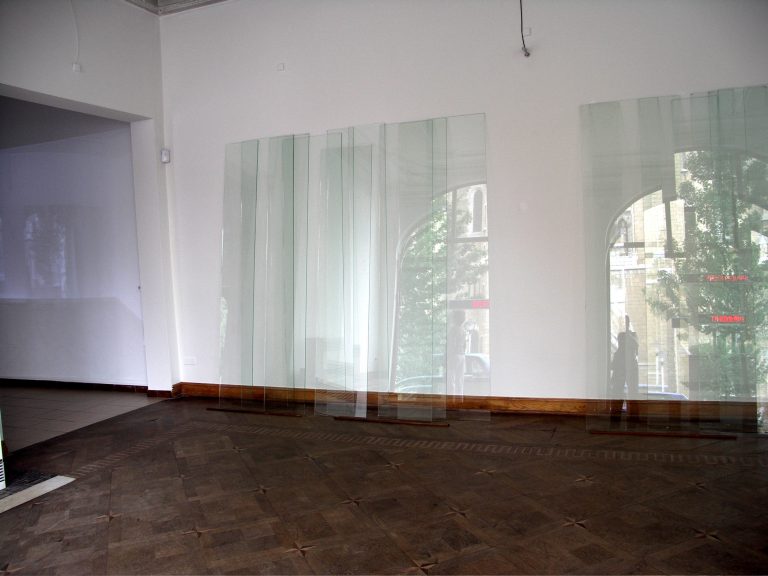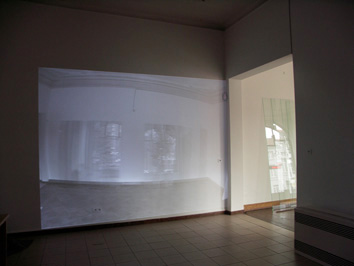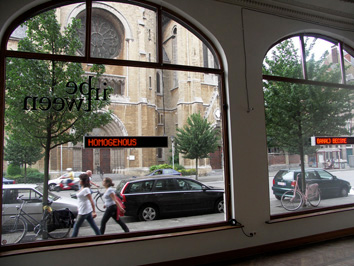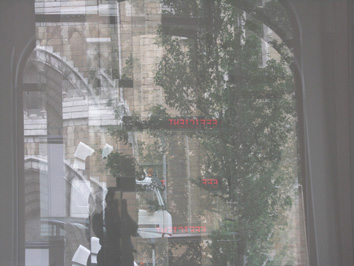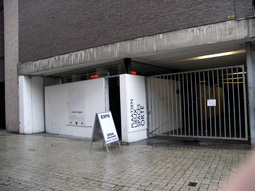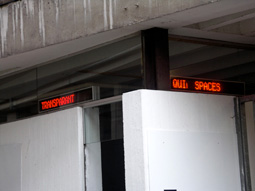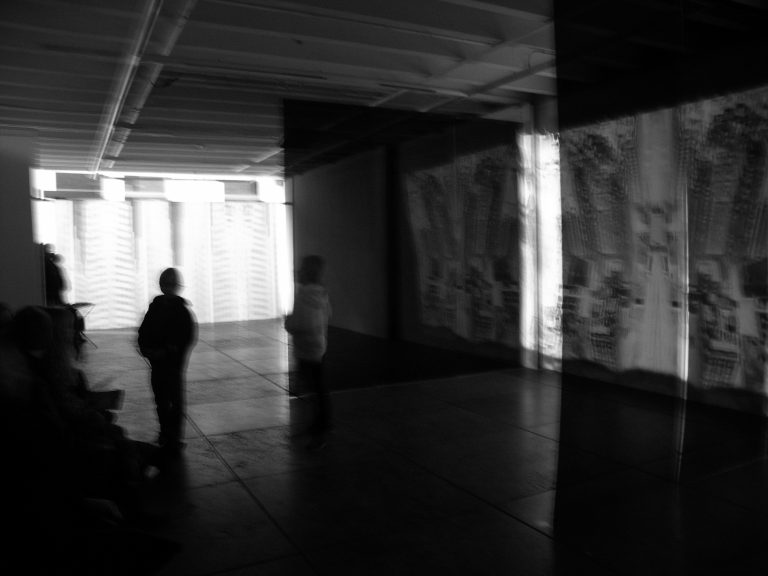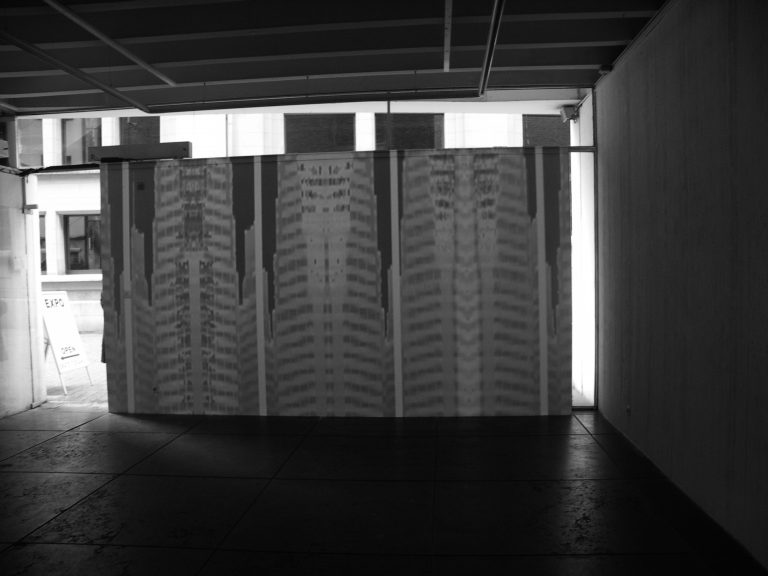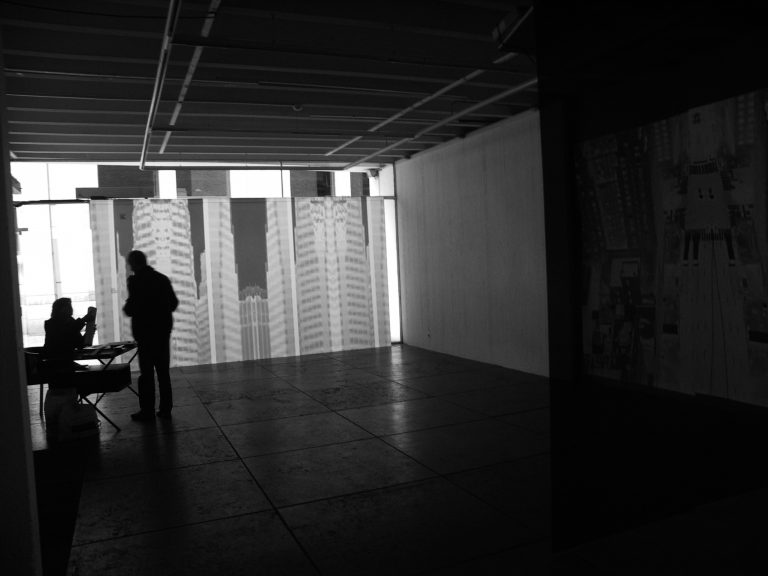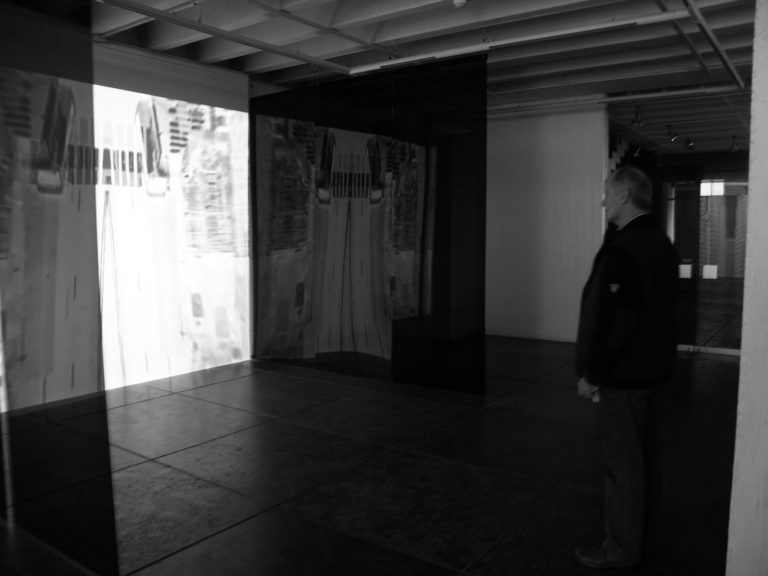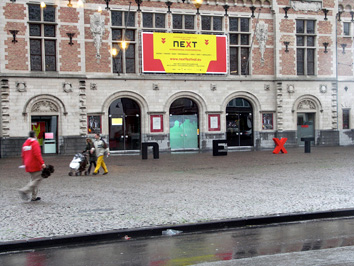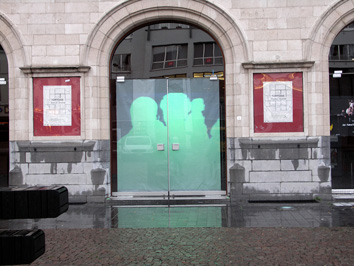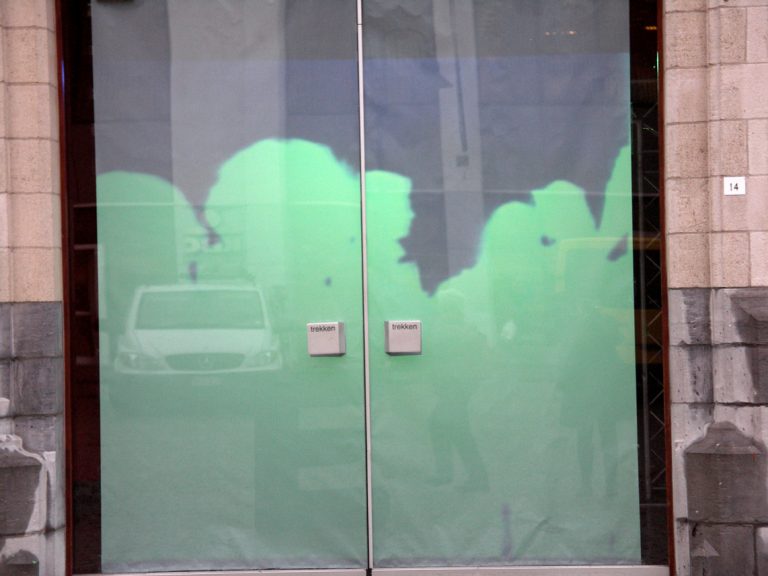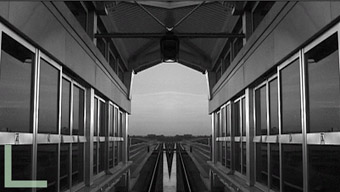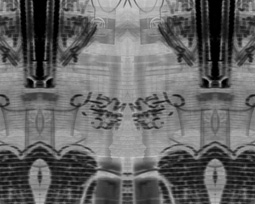the intimacy of space
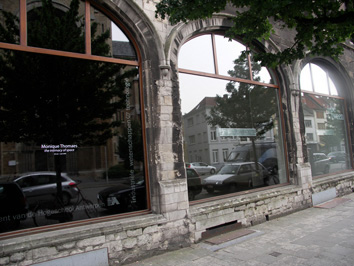
In-Between, Antwerp, Belgium 2009
multimedia
Johan Pas – abstract from his text to the Exhibition
For In-Between Monique Thomaes constructs a temporary environment about perceiving and being perceived. By doing this she tries to cross some conventional borderlines: those between art work and art audience, those between inside and outside, those between art context and art work. By putting a row of glass panels against the back wall, the wall is being deconstructed into a play of reflections. The ‘out’ is being pulled ‘in’ and vice versa. These reflections are being filmed and projected in the adjacent room. Another room contains the direct registration of the street scene. The visitors are moving in the empty exhibition space between both zones: togetherwith the images from the street they create the spectacle of reflections and projections. Two led-screens are the link between public space and exhibition space. De constant flow of words (and their reflection) generates images and ideas. It is like a score for a reflection about architecture.
Johan Pas
more:
Johan Pas
